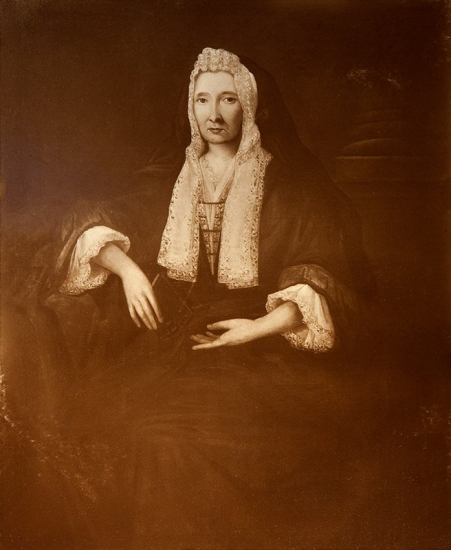Selina Countess of Huntingdon Wesleyan Movement Leader
The Wesleyan movement owes much to the work of an English woman of Royal descent. She is the daughter of the Earl of Ferrers, Selina, Countess of Huntingdon, (Lady Huntingdon).
Selina Countess of Huntingdon Conversion
Selina is married to Theophilus Hastings, the Earl of Huntingdon. Two of her sisters-in-law, Lady Margaret Hastings, and Lady Elizabeth Hastings are fond of the Oxford Methodists, (John and Charles Wesley, George Whitefield, Benjamin Ingham). Due to a personal bout with a severe illness and becoming bored with the life of a royal, the countess gains a saving faith by the influence of the sisters-in-law, Lady Margaret, and Lady Elizabeth.
Quickly, Selina also becomes a fan of the Oxford leaders of the Holy Club, George Whitefield and the brothers Wesley.
Selina Countess of Huntingdon Faith Questioned by her Husband
During the early portion of her faith walk, her husband sends for an Anglican Bishop to restore her to a “saner mind.” The learned Bishop tries to woo her from the Methodist leaders but fails miserably. At one point in the persuasive arguments, the Bishop expresses his regret about ordaining George Whitefield. In typical Lady Huntingdon style, she gives the following reply to the Anglican leader, ‘Mark my words my Lord, when you are upon your dying bed that will be one of the ordinations upon which you will reflect with pleasure.’
After nearly 20 years of marriage, in 1746, Lady Huntingdon becomes a widow. From this point forward, the spreading of the Gospel message is her life’s passion.
Lady Selina Countess of Huntingdon Early Ministerial Efforts
Moving in the most aristocratic circles Lady Huntingdon is not ashamed of her ‘lowly’ Wesleyan friends. She quickly invites John Wesley to her residence at Downington Park. In the midst of the pomp and circumstance, Wesley preaches with success to her stylish acquaintances. On another occasion, she sends for Whitefield. He too meets with favorable results among the well-to-do friends of Selina.
The efforts to preach to the women bedecked with elegant plumes on their heads, lead many of high society to become devout Christians, but there is the occasional skeptic. One fair lady, the Countess of Suffolk bursts into a violent rage as she blasts Lady Huntingdon to her face, proclaiming that she is insulted by the cross-eyed preacher’s words (Due to a childhood bout with the measles, Whitefield has one eye which cannot focus forward). Upon completion of her diatribe, she departs, never to associate with Selina again.
This event fails to destroy the evangelistic determination of the royal lady, inspiring her to greater heights for the kingdom of God. She consistently demonstrates her courageous zeal by her generous donations to the cause. She reduces her personal expenditures, even going as far as downsizing her residence in order to support traveling preachers. These same funds channel into building chapels for the poor. She does away with her personal servants. She sells the luxurious carriage and royal jewels to aid in the acquisition of theaters and halls in England, Ireland, and Wales. These buildings are quickly converted and opened as places of public worship. She also gives generously for the founding of Princeton College in the colony of New Jersey. Her donations to the cause of Christ approach more than half a million pounds.
Lady Selina Countess of Huntingdon Disagreement with John Wesley
Initially, Lady Huntingdon raises a small controversy with John Wesley. Her practice of encouraging a lay ministry with new converts does not sit well with the founder of the Holy Club. As she does with David Taylor (her former footman), she is quick to gauge the authenticity of a man’s faith. She feels no hesitation in sending and supporting David and others like him to preach to the populace. This practice as well as the traveling system that she is slowly establishing serves as another confirmation from God for John Wesley to travel his preachers. Although this practice of sending out men, new to the faith, puts her at slight odds with the Wesleys, the disagreement eventually fades in light of the great work that some of these men accomplish.
Her passion for the Island Nation of Great Britain inspires Lady Huntingdon to devise a plan for the evangelization of the entire kingdom. Methodically, she divides the entire nation into six districts. In her opinion, each district requires regular visits by what she terms, canvassers. These traveling preachers, or canvassers, are to spread the Gospel throughout the country.
The canvassers quickly become household names, not only for their connection to the royal family but also because of their successful labors. Men like Henry Venn, John Fletcher, William Romaine, Augustus Toplady and Martin Madan, as well as the brothers Wesley and Whitefield, become the most popular dissenting ministers (1) in all of England.
Nor are her efforts aided solely by the labors of men. Many of her noble women friends accompany her for numerous tours throughout England and Wales. These outings are in support of her many canvassers. She and her ladies take a more private approach to the outreach, behind the scenes counseling the new converts. In addition to teaching the new believers and sharing of their faith conversions, these royal women offer administrative advice to the traveling preachers in their efforts to conquer new territories.
Selina Countess of Huntingdon in Black Country
In the book, Black Country, Lady Selina Countess of Huntingdon features as the financial backer of both George Whitefield and John Wesley. In fact, it is one of the young itinerants financed and sent by Lady Selina Countess of Huntingdon who leads the thirteen-year-old Francis Asbury to faith in Jesus. This itinerant was David Taylor from the Barton-in-the-Beans Baptist Church.
(1) Evangelical Christians opposed to the stoic rationalism of the Church of England in the 18th-Century.


